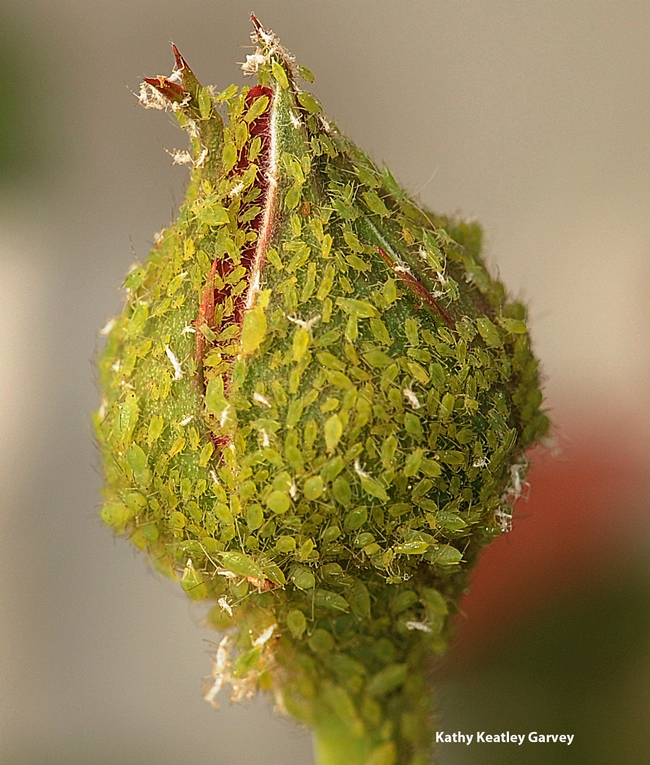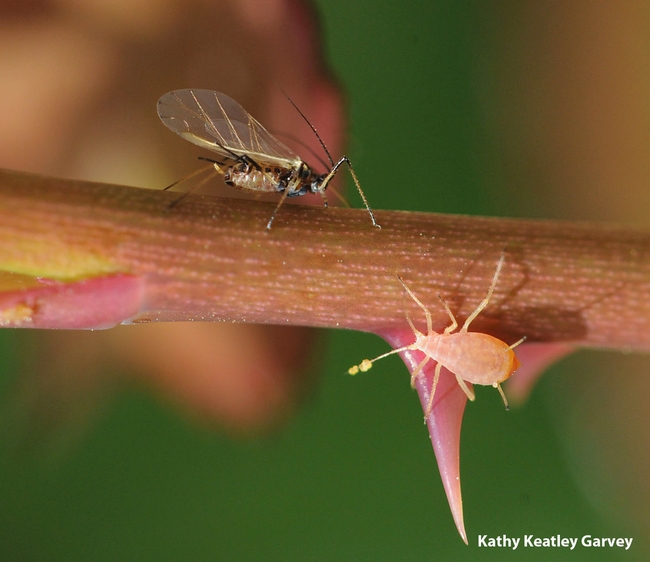
The Bohart Museum of Entomology's newly published newsletter, written by Lynn Kimsey, director of the museum and a professor of entomology at UC Davis, reveals the answers. She gleaned much of the information from the University of Florida's Book of Insect Records.
So, what is the heaviest insect? "We used to think that several large beetles, including the Goliath beetle and the titan long-horned beetle were the heaviest," Kimsey said. "But now the giant weta, Deinacrida heteracantha White of New Zealand is unquestionably the winner."
It weighs 2.5 ounces, or "more than a mouse," Kimsey said. "OK, so it's not even one pound, but that's still really heavy for an insect."
Indeed it is.
The longest? A walking stick, Pharnacia kirbyl, found in Malaysia and measuring 22 inches from front leg tip to hind leg tip.
The fastest runner? That would be the Australian tiger beetle, Cicindela eburneola, recorded running at 5.5 miles per hour.
The fastest flying insect? The male horsefly, Hybomitra hinei Johnson, which reached 89 miles per hour chasing an air rifle pellet.
The loudest? The North American cicada, Tibicen walkeri Metcalf, which can reach 108 decimels--"about as loud as a rock concert or power saw," Kimsey says.
The greatest wingspan? The Central American moth, Thysania agrippina Cramer (Noctuidae), also known as the white witch. Its wingspan measures up to 11 inches long.
The smallest adult? The mymarid fairy wasp, Dicopomorpha echmeptrygis Mockford. The males are 139 microns or 0.005 inches.
And if you think rabbits are highly productive, think again. Aphids win for the shortest generation time. "Female aphids are essentially born pregnant," Kimsey says. "Cotton aphids and corn aphids can complete a generation in five days at 77 degrees Fahrenheit. This means that one female and all her offspring could produce more than 1 trillion offspring in a season. That is as many aphids as there are stars in five average-sized galaxies."
We need more ladybugs and soldier beetles!
(P.S. If you have an insect question, want an identification or want to become a member of the Bohart Museum Society, contact the Bohart Museum at bmuseum@ucdavis.edu)
Attached Images:

Aphids cover a rose bud. Some aphids can complete a generation in five days. (Photo by Kathy Keatley Garvey)

Aphids go about their business. (Photo by Kathy Keatley Garvey)